By Roberto Motta
Photos by Fiat Chrysler Automobiles press archive and GGRM archive
Read the history of the X1/9 Prototipos
Read X1/9 Prototipos Today
Characterized by taut lines, and equipped with the engine and various mechanical components taken from the 128 sedan, the Fiat X1/9 was, and remains, a dream car.
The “X1/9” was part of a design series designation that began with the Fiat 128, which was the “X1/1”. The X1/9 was the first ‘Targa’ car produced by FIAT and Bertone.
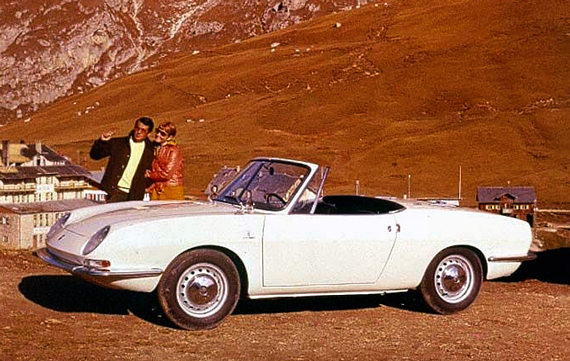
From the 1965 to 1968, with the Bertone’s help, Fiat produced a low-priced sports car, the 850 Spider.
In the past, it was been a normal Fiat practice to realize an highly-tuned Spider versions of its standard sedans; for example the 1100 TV (in the mid 1950s), the 1200 and 1500 Roadster (in the early 1960s) or, from 1969, the 124 Spider. During the 1965, with the Bertone’s help, Fiat produced also a low-priced car, the little 850 Spider. This Spider was a great commercial success, helping cement the relationship between Bertone and Fiat.
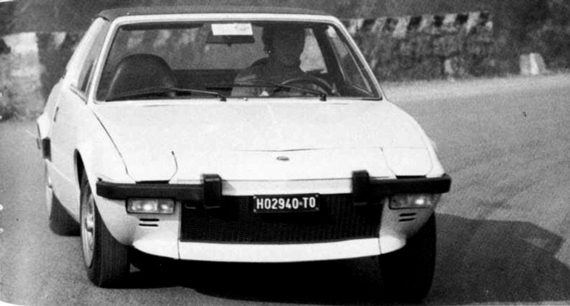
The car in this photo is one of the Fiat X 1/9s used in the press presentation on November 26th, on the Targa Florio’s roads. Some time later the car became the first X1/9 Prototipo.
The X1/9 1300
Despite the use of the basic 1290cc power-train from the 128 Rally, it was really an all-new car.
The designers moved the entire 128 engine and transmission unit in rear position, just ahead of the rear wheels. Notably, unlike the Issigonis Mini, the 128 had a separate transmission unit for easier servicing; the Mini transmission was under the engine where the sump would have been.
Fiat designers were able to utilize most of the existing 128 drive-train though substituting a larger-capacity aluminum sump, a cooling-system expansion tank and a hydraulically-operated clutch.
Similar in basic concept to the Porsche 914, the X1/9 had retractable headlights and two luggage compartments, and the roof was a removable panel which stored in the front compartment rather than the rear as in the 914. Fiat x1/9 had a water-cooled engine, so a radiator was required.
The radiator was mounted in front, with a thermostatically-controlled fan. The radiator hoses ran between the seats down the middle of the chassis at floor level. The fuel tank and the spare tire were mounted immediately behind the driver and passenger seats, respectively. This gave a weight distribution of 41.4/58.6 percent front/rear, not as favorable as one would expect in a mid-engine car, but good enough.
The car had independent suspension: the front suspension used a MacPherson strut, tubular wishbones and coil springs while the rear used MacPherson strut with box section lower arms, and coil springs. The brake system, without servo assistance, used disks brake all around with a wheelbase of 2202mm, front track 1335mm, rear track 1343mm and a weight of 880 kg.
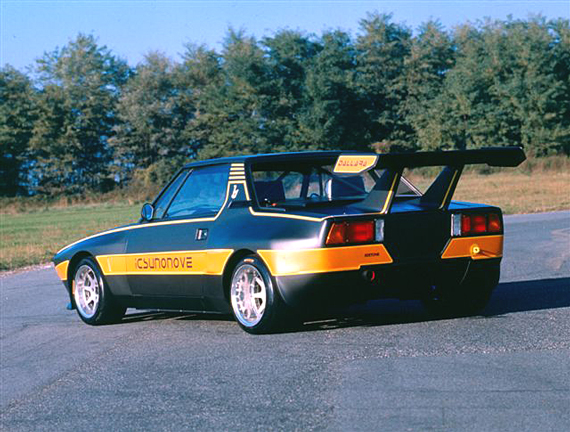
The first version of the Icsunonove Dallara was powered by a 16v engine of 1300 cc. Fed by a Kugelfischer mechanical injection. it produced about 192 hp. A 1600cc version had more than 200 hp.
The power for the European version of the X1/9’s engine was the same as for the 128 Coupe SL 1300 at 75 hp, but it was developed at a lower engine speed of 6000 rpm (versus 6600). The US version had slightly less power than the 66.5 hp at 6200 rpm.
The X1/9 1500
In 1978, the X1/9 had his first (and only) restyling with version “FIVE SPEED” thanks at the adoption of the 5-speed gearbox.
The car was “Americanized” with the adoption of massive aluminum bumper absorber, and a new bonnet that was changed to accommodate the new engine of 1498 cc and 85 hp at 6000 rpm. The interior was completely redesigned with new ergonomic seats and new dashboard.
Thanks at the new engine and the transmission with 5-speed, the car had an acceleration from 0 to 100 km / h in 10 seconds.
Bertone X1/9
From 1982, the production was almost entirely absorbed by the US and Bertone put its brand in place of the original Fiat, essentially taking over the production of the car. The USA version used the engine with new fuel injection which increased the horsepower to 75 at 5500rpm.
Over the years the Bertone X1 / 9 was built in a series of special versions with two tone bodywork and luxurious interior. The chassis featured anti-corrosion treatments with special paint to 9 layers.
Production ended in 1989 with the “Grand Finale” with new alloy wheels and a small spoiler on the back.
About 170,000 X1/9s were built from 1972 to 1989.
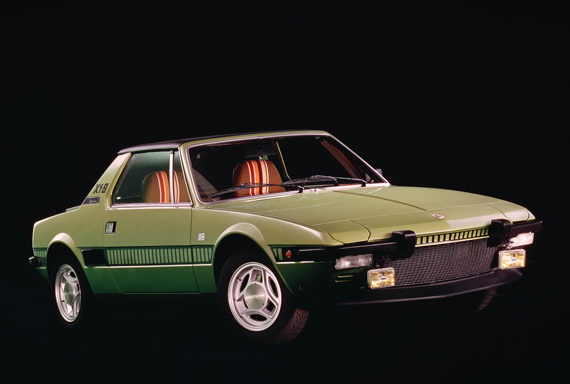
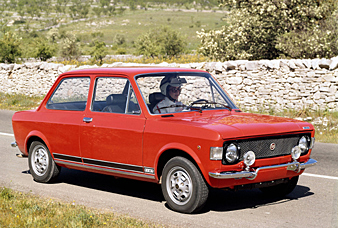

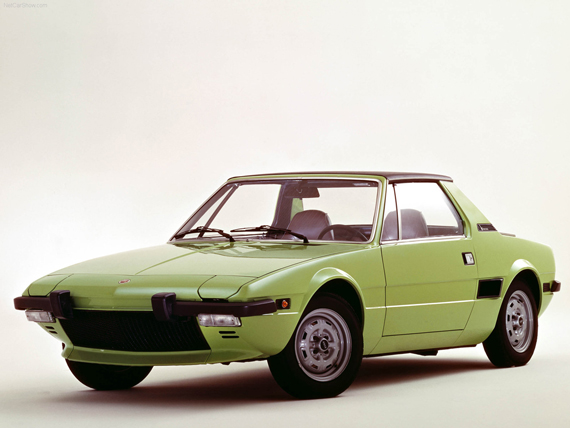

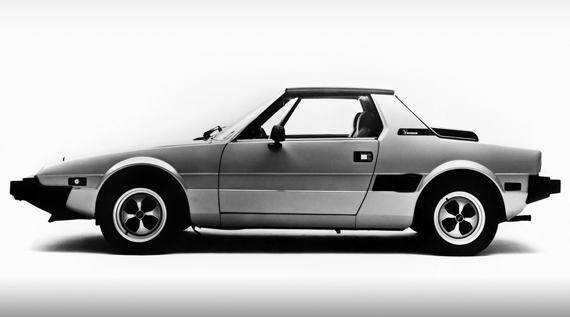
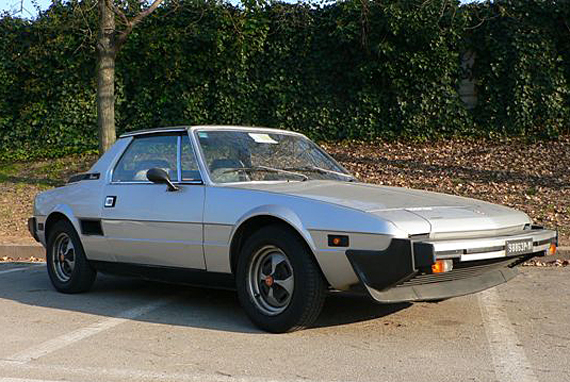
I have a 1984 Bertone X1/9 with only 15000 miles. It is white over dark gray two tone with red leather interior. It has A/C and power windows and looks like new.
It a great car to own and show and even more fun to drive. It fits in well with my 81 Fiat Brava and my 88 Yugo GVX.
Very Interesting
I had a lovely pale metallic blue 1977 1300 version in the early 80’s. It went around roundabouts like nothing else I’ve driven. It was practical too with a fairly big boot at the front and a good one at the back. It’s just come back to me that mine had fitted X1/9 luggage in the rear boot. Had to be careful to avoid locking up the front in the wet. The only downside I can remember is that with the top off and windows down there was buffeting off the back window that forced your head forward so was a bit tiring. Shame the rear window didn’t swivel open. I was once told by UK Lancia specialist Barry Waterhouse that the Lancia Monte Carlo/Scorpion was meant to be a Fiat X/20 but they decided that Lancia was more in need of a new model. He said some Monte Carlo parts still had X/20 marked on them. Can anyone confirm this?
A beautifully-designed and wonderfully nimble little car. My wife and I owned a new 1974 that I auto-crossed with great success. It was definitely a “momentum” chassis, you had to keep off the brakes and toss the car to maintain speed, but it worked very well. When we sold it in 1976, rust was already beginning to make itself known, starting with the tiny steel bumpers. Better materials inside and out would have made this a much better car.
OK… I’ll jump in here…
I’ve cared for my ’79 1500 since 1983… currently 175,000 on the same engine… which has never been opened! I have had the trans rebuilt and subsequently replaced with a later 5 speed… with 3 R&R’s total. Sadly(?)… most of the smog equipment and its 50 pounds of weight accidentally fell off and the change in “attitude” was amazing.
Over the years I have found simple and usually FREE methods of better cooling as well as a cool intake charge… changed out the strangled carb to a simple Weber 32 with mechanical secondary, messed with timing, plugs and lightened the flywheel.
I estimate a good 80hp now, mileage went up from 24/26 mpg to 26/33 mpg. What a PLUS!
As for the suspension… new struts were installed all around and the front springs cut and massaged for a 2 inch drop at the bumper. New 60 series tires, 175s up front and 205s in the rear give it a great stance PLUS almost eliminating front wheel lock-up due to the better tire patch and static weight transfer. (Back in the day with the 165/80s, a common practice was a 60 pound bag of cement was stored in the front trunk!)
The aesthetics… I replaced the seats and carpets and cleaned it all up… and basically have kept it that way with lots of tinkering. I find a center console to be a real plus for a few bucks. As for rust… I guess I am truly bless living in the High Desert as there simply isn’t any and this car was manufactured before the processes Bertone introduced in ’83. I have just a bit more into it that what I paid for it over 30 years… and probably the most FUN for the $$$ I have ever invested in.
I tried to post a photo but that apparently doesn’t work here….
Interesting car the Author has… a Euro (?) ’82 with what appears to be the wheels introduced to North American in ’79.
Dear Stanley,
yes, I confirm That the X1 / 20 Became the Lancia Montecarlo.
During the 1973 season the prototype of the car was photograpated duringn some tests on the Italian streets.
The motorsport magazine give the notice as a new Fiat for the ’74 season, but the story, sometimes, has a change and in the ’75 season was to proposed the Lancia Beta Montecarlo. In the US, the car was called Scorpion, “Because the name Monte Carlo was just used from Chevrolet.
The Montecarlo story stemmed from a collaboration between Fiat and Pininfarina, for the construction of a sports car “low cost”.
The first prototypes were presented in 1970 with the name of Fiat X1 / 8, while the final one, came in 1974 with the initials X1 / 20.
In 1974 the car was enrolled at the ‘Giro d’Italia Automobilistico’ (Tour of Italy Automotive). the car, with important aerodynamic modifications, was named Abarth SE030, and was pushed by a V6 engine producing 285 hp (the engine was derived from the Fiat 130 engine).
A series of thoughts, not least of which was to prepare future version of the new 131 Abarth sedan (a solution that was able to guarantee a return of image more direct), was the choice for the freezing of the project, which was resumed in the following year, when, the X1 / 20 debuted at the Ginevra Auto show with the ‘Lancia Beta Montecarlo denomination’.
I hope I have satisfied your question
Roberto
Dear Tony
My car has the standard wheels, that was mounted from the 1978 model year, Naturally the car was sold with some other type of wheels included the alloy wheels.
Also the bonnet is different from many other cars of its period, the bonnet as the air intake only on the top and no one lateral air intake.
Roberto
Dear Roberto, thanks for your answer. My 1977 model had alloy wheels not shown here with a flat disc covering the wheelnuts and three large open spokes.
Sorry – my mistake, the wheels I had are shown in the first photograph.
There are two Fiat X1/9 1500 five speed versions, the main differences are the mirrors, and the bonnet. The early 1500 have a door mounted mirror and no side vents on the bonnet, the late Fiat badged 1500 have a glass mounted mirror
And the formentioned vents. All Fiat X1/9 1500(in Europe?) Have only one outside mirror